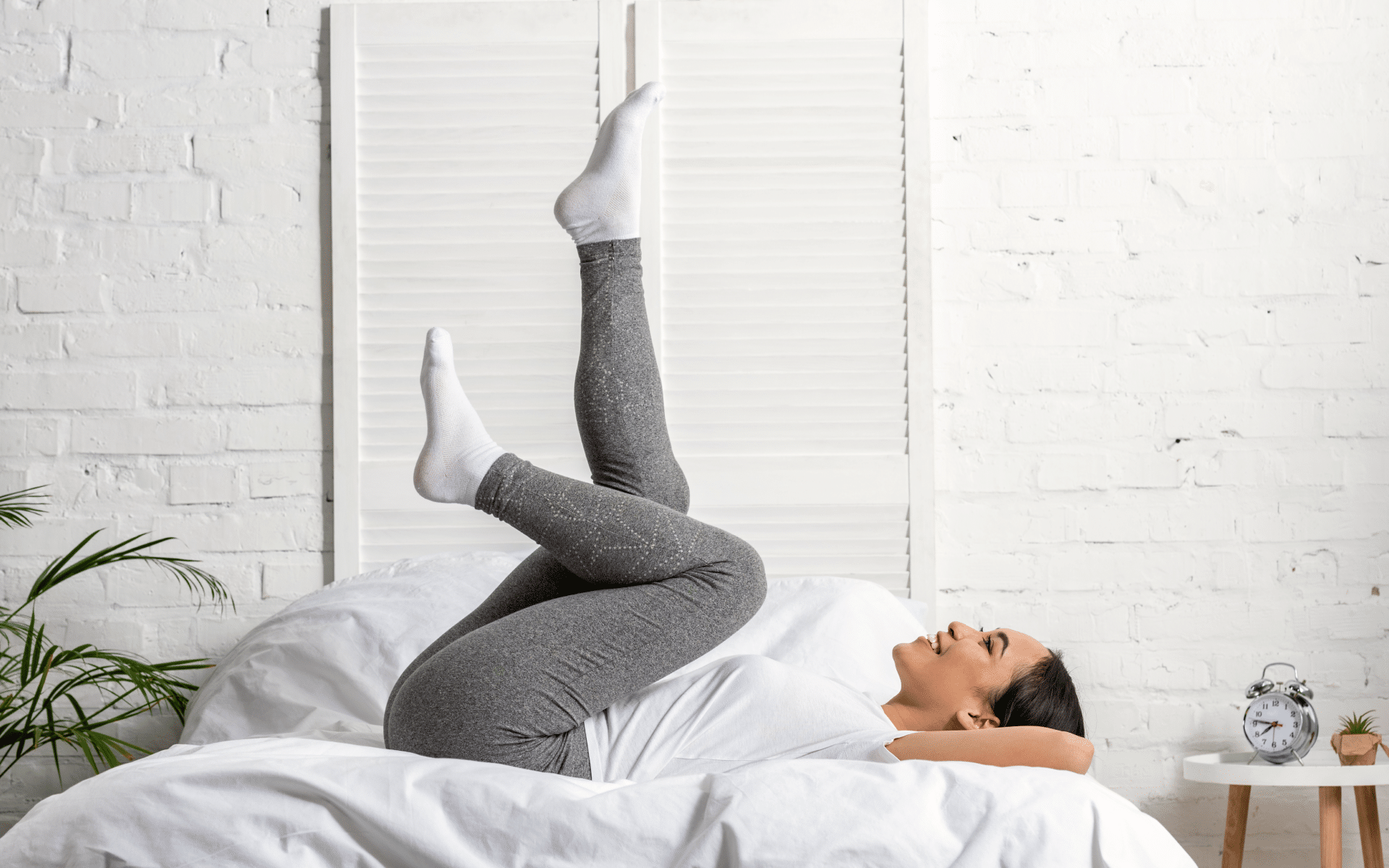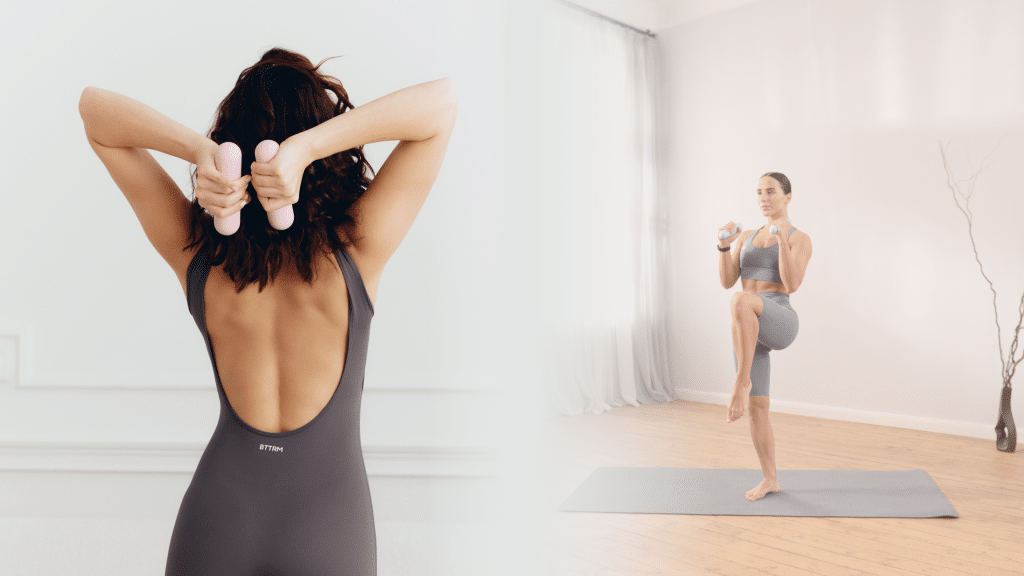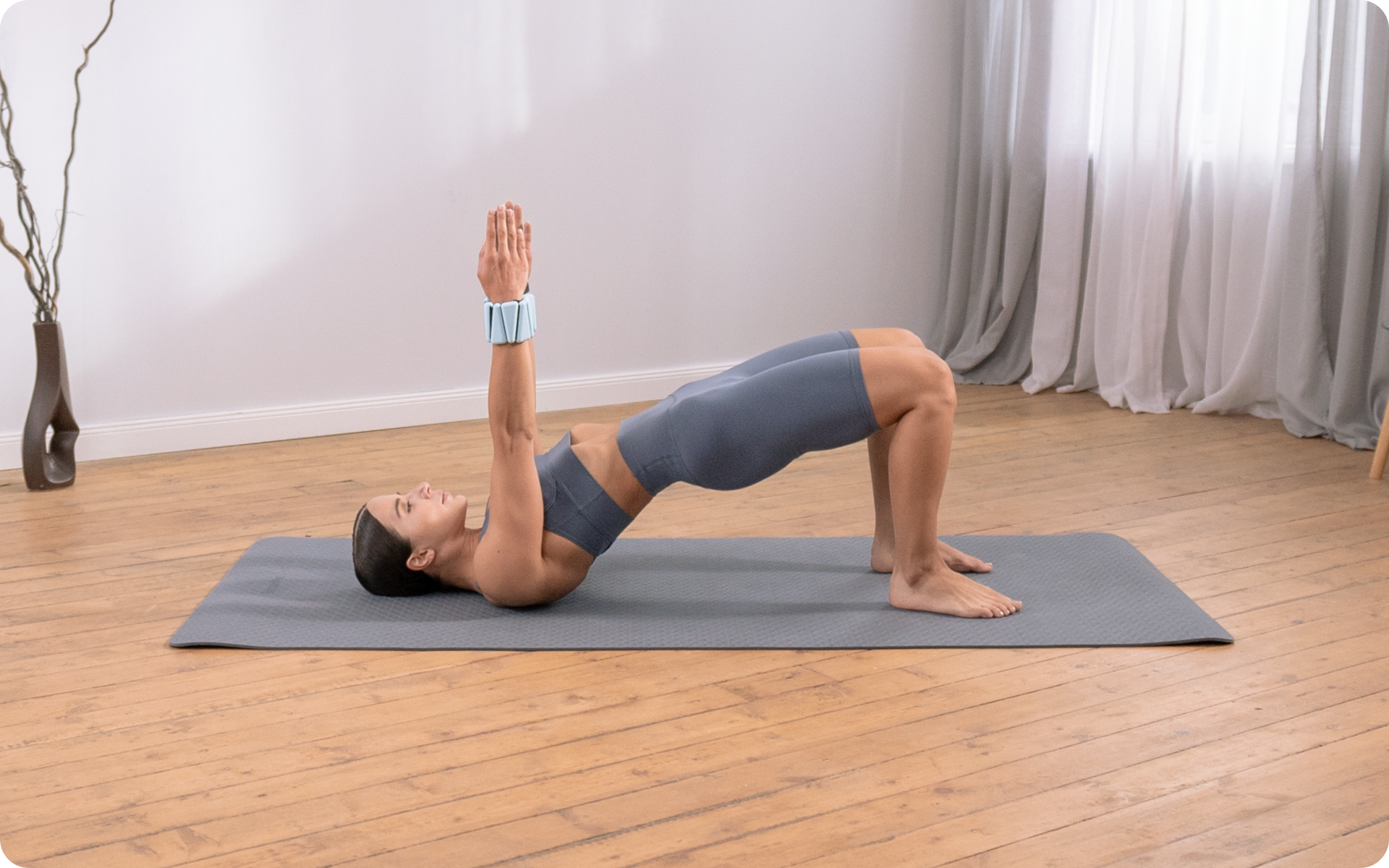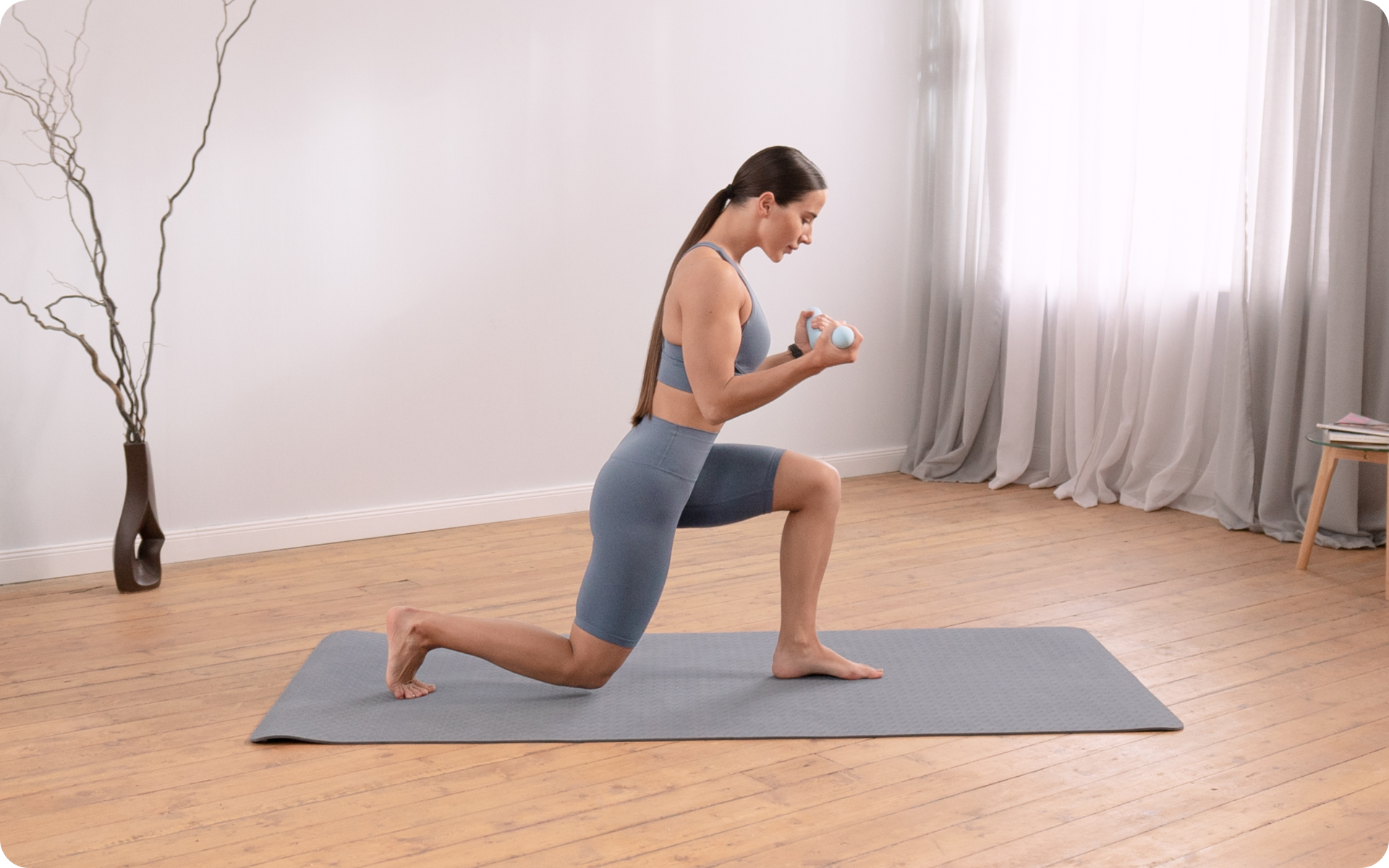Sedentary lifestyles are more common today than ever before. There are many reasons, such as the exponential increase in conveniences in almost every area of life. In addition to reflecting on the causes of this lifestyle, we should also look into how you can overcome its side effects. Constantly sitting in front of screens can seriously impact your health and movement is one of the best ways to deal with this situation.
Exercise is an age-old remedy for many illnesses. It’s also a means of preventing health issues. When discussing ways to deal with a sedentary lifestyle, most fitness experts often vouch for the benefits of elevating the legs. This simple exercise can flip your fitness score and energize you.
In this article, we’ve rounded up the benefits of leg elevation and some tips to make the right positions.
Does Elevating the Legs Actually Work?
People experience pain and discomfort in their legs for several reasons. A study showed that vein disease is a common condition (1). It affects approximately one-third of adults over 45. However, it’s important to remember that younger individuals are also prone to it. Even healthy men and women in their 20s and 30s can develop vein disease.
This is because our veins are affected by lifestyle factors such as excess weight, diet, exercise, smoking, and sedentary living. Initially, the condition may be painless, but over time, numbness, throbbing, and aches set in, which may worsen. Some symptoms you may experience include:
- Unexplained leg swelling in your feet and ankles
- Muscle cramps
- Visible spider veins or varicose veins
- A feeling of heaviness in the legs
- Cold or numb legs
- Skin color and texture changes on the legs and feet
Studies have consistently shown that elevating the legs for 30 minutes about 4 times daily can improve these symptoms by decompressing lower extremity veins (2).
Think of it like this: your veins must work against gravity to get blood back to your heart. When you sit with your legs down, they’re still working hard. Putting your legs up helps because gravity works with your veins, allowing the blood to flow more easily. This gives your veins a break and helps reduce pain and swelling.
What Are the Benefits of Elevating the Legs?
Lying down or simply sitting with elevated legs carries many potential benefits. Some of these are:
- Reduced Swelling
Swelling occurs when there’s inflammation or fluid accumulation. Some injuries and health issues may be causing your legs to swell. Raising your legs above the heart level may also drain the excess fluids more effectively (3).
- Boosts Natural Blood Flow
The natural blood flow comes easier when the legs are elevated. Our veins must exert more effort to flow the blood against gravity and back to the heart. Give them a break by elevating your legs at least 6 inches above your heart.
- Lowers Pressure
One of the benefits of elevating your legs on walls is lowered pressure. It drains the pooled blood, which reduces the pressure on the veins. This enables them to get much-deserved relief. When left untreated, pressure may also lead to varicose veins or other severe vein issues.
As with every exercise, following precautions when elevating your legs on a wall is essential. In some conditions, people may experience discomfort or pain instead of enjoying the benefits of elevating their legs on the wall. It’s always wise to consult a healthcare professional to ensure this practice is safe.
Lean and toned up body isn’t just a far-fetched fantasy. Check out the BetterMe: Health Coaching app and watch it propel your weight loss journey into high gear!
What Are the Dangers of Sleeping with Your Feet Elevated?
Do you often lie down on your couch with your feet elevated? It’s quite a relaxing pose, particularly when you have your favorite show on the TV. You may feel as if all your stress is leaving your body, but did you know there’s a right way and a wrong way to elevate your legs? Doing it incorrectly can reduce the health benefits.
Who Should Avoid Elevating Their Legs?
People who shouldn’t elevate their legs include:
- Side Sleepers: Sleeping with elevated legs may be uncomfortable if you’re a side sleeper. The position could be awkward and painful to maintain.
- People with Restless Leg Syndrome: It isn’t favorable for those with restless leg syndrome (RLS). These individuals have a constant urge to move their legs, which makes it difficult for them to sleep. If they add a prop to lift their legs, it becomes more challenging to move them as they also have to move the support.
- Combination Sleepers: If you change positions a lot in your sleep, you will likely find it annoying to constantly adjust your leg support.
Potential Problems When Sleeping with Elevated Legs
Sleeping positions have a significant impact on your health (4). Even though there are several benefits of elevating your legs at night, some potential setbacks include:
- Muscle Cramps: Some people stress about cramping. Keeping your feet up while sleeping can cause the feet and calf muscles to become sore or tense (5). This is a rare occurrence, but you should be vigilant if you notice such circumstances.
- Discomfort: If you’re someone who turns a lot in your sleep, you should avoid sleeping with elevated legs.
- Skin Irritation: Some people may use a wedge pillow to help them keep their legs elevated during sleep. If this pillow doesn’t have an ergonomic shape, it may result in a rash or blisters.
Elevating your legs will only be beneficial if you do it the right way. Find a sustainable solution that works for you and talk to a trainer or a doctor if you have any concerns.
Read more: Why Do My Muscles Tighten Up When I Sleep? (Causes & Solutions)
How to Elevate Your Legs Right
Now that we’ve discussed the benefits of elevating your legs while sleeping, let’s discover how to do it correctly. When done correctly, it can bring loads of perks.
Here’s how to do it right:
- Use a Folded Blanket or a Small Pillow
If you sleep on your side, you should look for props to elevate your legs. For example, you can put a wedge-shaped pillow or a folded blanket between your legs to sleep comfortably. This position will align your spine and make blood circulation easier.
- Pile Some Pillows
The best and easiest way to elevate your legs is to stack some pillows. Ensure you get the right height according to your preference. Choose firm and medium-sized cushions that collapse easily under the pressure of your legs. However, you may need to shift the pillows when you turn or toss them around during sleep.
- Find an Adjustable Base Bed
An adjustable base bed is yet another way to elevate your legs. These beds are quite popular in medical circles and have multiple features. For example, they allow you to raise your head and legs at the same height. Some beds also have a massage option and LED lights to facilitate the users.
For How Long Should You Elevate Your Legs?
Those who want to enjoy the health benefits of elevating their legs should try elevating them for at least 15-20 minutes daily. If you elevate your legs for less than this, your blood and fluids may not get enough time to drain out of your legs (5).
Where Does the Fluid Go When You Elevate Your Legs?
Elevating your legs keeps the blood from pooling in your ankles, feet, and lower legs. It prevents varicose veins (a specific vein condition that is in the minority) by pushing the blood back toward the heart without fighting gravity (6). The heart still pumps blood in these extremities, but the stress on it is reduced. This helps mitigate swelling and brings oxygenated blood to the limbs.
It may be confusing for some people to determine if they should follow this practice of elevating their legs. One of the first indications you should start elevating your legs is the appearance of varicose or spider veins around your calves and skin discoloration.
These conditions occur because the blood is forced into smaller capillaries or veins and their capacity is exceeded. Once there, the body uses oxygen in the blood, changing its color and causing the veins to expand.
Does Elevating the Legs Increase Blood Pressure?
Elevating the legs for longer may increase blood pressure. Therefore, it’s recommended to practice it in intervals. If you have low blood pressure, this position tends to regulate blood pressure (7).
Sometimes, shock causes low blood pressure (8). If you find someone who is in shock, you should immediately call for medical assistance. This happens because raising your legs raises your blood pressure, and more blood is pumped with each heartbeat. This increased pumping is more efficient and can improve your performance and how well you do physical tasks.
Usually, sitting or standing in the same position for long hours restricts circulation in the veins. This increases blood pressure in the veins, so putting your feet upward will lower the pressure by draining pooled blood from the veins.
How to Improve Circulation in Your Legs While Sleeping
Poor circulation is a common problem in people who spend much of their time standing or sitting. The following are some telltale signs that you’re suffering from poor circulation:
- Swelling in the feet or ankles
- Numbness in the legs
- Cramping in the legs while walking
- Skin feels cold to the touch
- Fatigue or heaviness in the legs
If you notice any of these symptoms, you should consult a healthcare professional to help you. Here are a few things you can do to improve your blood circulation while sleeping:
Wear Compression Socks
Compression socks work by applying pressure on the legs. This pressure boosts blood flow and may reduce swelling or cramps (9). These socks are mostly used during traveling or exercise, but they can be worn during sleep to improve circulation. You can also check out how to make a warm compress and use it as an alternative to enhance circulation in your legs.
Whether you’re looking to simply pep up your fitness routine, jazz up your diet with mouth-watering low-calorie recipes or want to get your act together and significantly drop that number on your scale – BetterMe: Health Coaching app has got you covered! Improve your body and revamp your life!
Elevate Your Legs
You may usually suffer from achy and tired legs when working a long day. Elevating your legs above heart level may help overcome this trouble. As discussed above, this allows the blood to flow quickly to the heart. You can elevate your legs by placing pillows under your feet or knees.
Sleep on a Side
Gravity can make blood collect in your legs when you sleep on your back, which can lead to swelling. However, sleeping on your side allows blood to flow freely through your legs, which reduces swelling and improves blood circulation.
Sleeping on your side can also help prevent varicose veins from worsening. If you’re not accustomed to sleeping on your side, it may take a while to get used to it. Once you do, you may discover it’s a more comfortable and healthier way to sleep.
Overall, sleeping with elevated legs has many benefits. Raising your legs six to eight inches above heart level allows for better circulation from the veins and keeps the blood from accumulating in your legs. It can also be a comfortable position and make you feel at ease while sleeping. You can also learn some exercises for circulation in your legs to gain more benefits.
Gravity helps the extra blood in your legs go back to your heart and circulate throughout your body. This reduces the likelihood of leg pains, tingling sensations, soreness, or numbness in your legs and feet when you wake up.
What Are the Side Effects of Elevating the Legs?
Keeping the legs elevated isn’t suitable for everyone. In some cases, it may lead to circulation challenges. Some studies have shown that sleeping with elevated legs can cause circulation problems, whether you lift your whole body or just feet (10). This means that you’ll likely struggle with circulation in your lower extremities while sleeping. This could lead to blood clots, especially if you sit in the same position without moving for several hours.
If you have any underlying condition, talk to your doctor to ensure it’s safe. They may have specific tips about how to steer clear of the side effects. Next, ensure you have proper support for your body by lying on a surface that provides good support.
Read more: What Is Somatic Walking? How Doing This Can Improve Your Mental and Physical Health
Who Should Avoid Elevating Their Legs?
Although elevating the legs brings many benefits, it doesn’t suit everyone. Here are some people who shouldn’t elevate their legs up a wall or seek consultation from a doctor first:
- Pregnant Women: In some cases, pregnant women may be advised to avoid elevating their legs. This is particularly true if they have certain conditions.
- People with Nerve Damage: Elevating the legs can sometimes put pressure on nerves, causing discomfort or pain for those with nerve damage.
- People with Health Concerns: If you have a medical history or have certain conditions, you should talk to your doctor before you start a leg elevation routine.
Listening to your body is essential in every exercise or fitness routine. If you feel pain or discomfort while elevating your legs, you should stop and look for other movements to help you deal with your condition.
No, sleeping with elevated legs isn’t dangerous. In fact, it’s one solution that’s presented when wondering how to get rid of water retention overnight (12). If you don’t have any medical conditions or face any side effects, you should try it out to avoid water retention in your legs. When you elevate your feet, blood can flow back to your heart more effortlessly, which reduces the workload on your cardiovascular system. Although there are many benefits of elevating your legs, you shouldn’t do it for too long. Doing every physical movement in moderation is important to ensure you don’t cross the limits. You can start with 20 minutes and slowly expand the duration when you feel you can do more. Elevating your legs may not be ideal for everyone as it can sometimes result in circulation issues. Research has indicated that sleeping with your legs raised could lead to circulation problems (10).Frequently Asked Questions
Is it bad to keep my legs elevated all night?
Is elevating my legs bad for my heart?
Can I elevate my legs too much?
Can elevating my legs cause blood clots?
The Bottom Line
Elevating the legs is often considered a good practice for individuals with circulation issues and vein diseases. Remember that leg elevation provides relief from temporary symptoms. Elevating the legs has many benefits, but you can’t rely on it to permanently relieve ailments.
Practicing leg elevation as a part of your routine can help you maintain a good posture and overcome pressure in the legs. However, you must understand how to practice it correctly. Headaches, stress, digestive issues, and insomnia are potential aftereffects of incorrect spinal alignment.
Knowing this, you should seek advice from your physician to understand how to elevate your legs and for how long. You should notice that leg elevation positively changes your physical and mental health when it’s done correctly for an extended period.
DISCLAIMER:
This article is intended for general informational purposes only and does not serve to address individual circumstances. It is not a substitute for professional advice or help and should not be relied on for making any kind of decision-making. Any action taken as a direct or indirect result of the information in this article is entirely at your own risk and is your sole responsibility.
BetterMe, its content staff, and its medical advisors accept no responsibility for inaccuracies, errors, misstatements, inconsistencies, or omissions and specifically disclaim any liability, loss or risk, personal, professional or otherwise, which may be incurred as a consequence, directly or indirectly, of the use and/or application of any content.
You should always seek the advice of your physician or other qualified health provider with any questions you may have regarding a medical condition or your specific situation. Never disregard professional medical advice or delay seeking it because of BetterMe content. If you suspect or think you may have a medical emergency, call your doctor.
SOURCES:
- Global impact and contributing factors in varicose vein disease development (2022, ncbi.nlm.nih.gov)
- Varicose Veins (2014, ahajournals.org)
- The swollen leg (2016, journals.sagepub.com)
- How Sleeping Position Affects Your Health (2019, sleephealthsolutionsohio.com)
- Muscle Cramps (2023, ncbi.nlm.nih.gov)
- Leg Elevation Tips and Guide (n.d., cfvein.com)
- Varicose Veins (2023, nhlbi.nih.gov)
- Low Blood Pressure (2022, msdmanuals.com)
- Shock (n.d., betterhealth.vic.gov.au)
- How to Choose and Use Compression Stockings (2023, webmd.com)
- Is it dangerous to sleep sitting up? (2019, health.harvard.edu)
- What to know about water retention (2024, medicalnewstoday.com)










